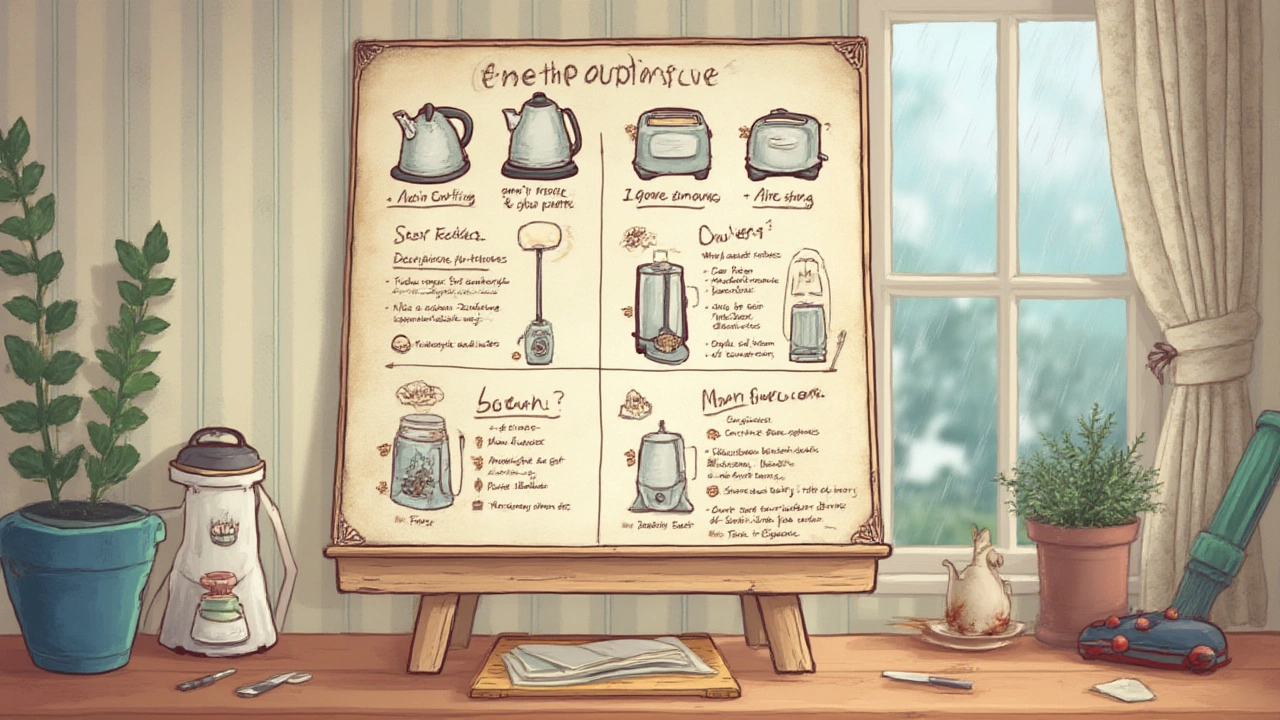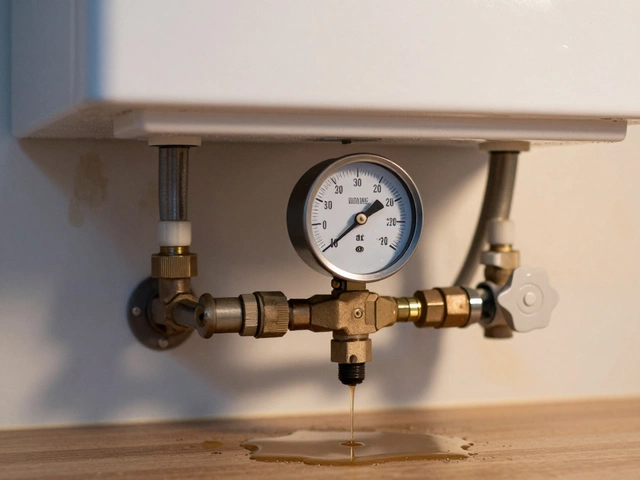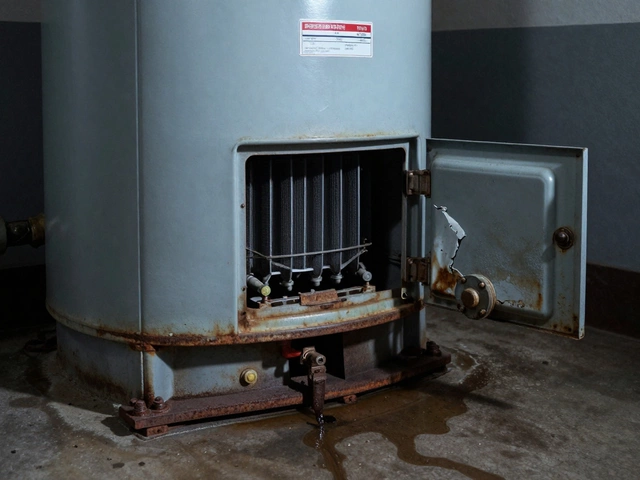What pops into your head when you try to describe your blender? Most people just say, "uh, it blends stuff." That’s like calling your dog "furry." Sure, you’re not wrong, but you’re missing the stuff people actually want to know. Don’t worry—I’m about to show you how the pros describe appliances, and why it matters more than you think. Whether you’re selling your old dishwasher, shopping for a new fridge, or just trying not to sound clueless when your parents ask about your fancy espresso machine—knowing how to describe an appliance can save you time, money, and headaches.
Why Accurate Appliance Descriptions Actually Matter
If you’ve ever scrolled through secondhand listings, you know the struggle. "White refrigerator. Works." That tells you absolutely nothing. When you actually need something that fits your space, your needs, and your style, you want to know more: dimensions, capacity, special features, and honestly—does it make ice or not? Precise descriptions help you make smarter choices and avoid nasty surprises, like realizing your super cool air fryer doesn’t fit on your countertop or your vintage toaster was made for bread slices the size of playing cards.
Here’s a wild fact: According to a 2024 Home & Appliance Consumers Survey, 68% of people said they returned an appliance they bought online because it didn’t match the description. That’s not just annoying—it’s expensive for both the buyer and seller. On the flip side, products with clear, detailed descriptions get snapped up 40% faster online. Retailers like Best Buy and Home Depot don’t just list "toaster." They give you wattage, color, size, features, photos from every angle, and even highlight what makes their toaster worth your money.
Beyond just shopping, clear appliance descriptions help in lots of situations. Renting out an Airbnb? You want people to know exactly what’s in the kitchen. Planning a kitchen remodel? Precise specs keep you from ending up with an oven that juts out awkwardly. Sharing this info is not about sounding fancy—it’s about making life easier for everyone. Think of it as the difference between “I have a car” and “I have a blue 2018 Toyota Camry with backup cameras and heated seats.” People understand right away if it fits their needs, and you get fewer basic questions.
Underselling an appliance might make it harder to sell, while overselling (claiming your microwave is "like new" when it’s older than TikTok) is a surefire way to tank your reputation with buyers and neighbors. Honesty, accuracy, and a little bit of detail get your appliance off the counter and out the door—quicker.
What Details to Include When Describing an Appliance
Forget vague words like “great” or “awesome.” When someone asks about an appliance, they want the nitty-gritty. Start with the basics: type (refrigerator, toaster, washing machine), brand, and model. If you have the full model number, include it—it might not sound sexy, but it makes a world of difference if someone wants to look up the manual or see if it’s compatible with their kitchen setup.
Size matters—especially in apartments or awkward kitchens. List the dimensions (height, width, depth). If you don’t have a tape measure handy, look it up online using the brand and model. For example, "Samsung RF28R7351SG French Door Refrigerator, 36" wide, 70" tall, 35.5" deep." That tells you if it fits before you fall in love with it.
Don’t skip the capacity. Your washing machine might look normal in your laundry room, but if it only holds three shirts, that’s critical to know. Fridges are measured by cubic feet, washers by kilos or pounds, microwaves by liters. Make friends with the unit stickers or the appliance’s manual—it’s all there.
Features are where you can make your appliance sound a cut above. Think about what sets it apart. Does your coffee maker have a built-in grinder? Does your oven do convection cooking? Spill the details on extras: smart controls, Wi-Fi, delay start timers, energy efficiency ratings, special trays, self-cleaning cycles. For refrigerators, mention water dispensers, ice makers, and whether shelves are adjustable or spill-proof. For dishwashers, heated drying, noise level, and third racks are hot points.
A table can help make things crystal clear. Here’s an example breakdown for a dishwasher:
| Feature | Description |
|---|---|
| Brand / Model | Bosch SHXM78Z55N |
| Dimensions | 23.6" wide, 33.9" high, 23.8" deep |
| Capacity | 16 place settings |
| Noise Level | 42 dB |
| Special Features | Third rack, adjustable tines, Wi-Fi control, half-load option |
Don’t gloss over condition. Use real-world language: "Lightly used," "normal wear and tear," or "brand new, still in box." Point out marks, scratches, or quirks ("door squeaks but works fine," "missing one freezer shelf"). It’s better for everyone if you over-share than under-share here.
Lastly, mention what’s included (original manual, remote, extra trays or filters). And if you’re being really thorough, explain why you’re selling or giving it away. This builds trust, and people love feeling like they’re getting the back story, not just the hard sell.

Examples: Good vs. Bad Appliance Descriptions
What’s the difference between a great description and a lazy one? See for yourself.
- Bad: "Old microwave, works fine."
- Good: "Panasonic NN-SN966S countertop microwave, stainless steel, 2.2 cu ft. 1250 watts. In great shape, a few cosmetic scratches on side. 10 power levels, sensor reheat, child lock. Includes glass turntable. Manual available online."
Notice how much more useful the second option is? Shoppers can now check the size, style, power, features, condition, and if it’s compatible with their space.
- Bad: "Washing machine for sale."
- Good: "Maytag MVWB865GC top-load washer, 27.5" wide, 28" deep, 43" tall. 5.2 cubic foot capacity. Energy Star rated. Features: glass lid, deep fill option, quick wash cycle. About 2 years old—used weekly, no issues. Clean, smoke-free home. Includes water hookup hoses. Selling because we’re switching to a stacked unit to save space."
And here’s a table showing common details for a refrigerator listing:
| Spec | Example |
|---|---|
| Brand / Model | LG LFXS28596S |
| Capacity | 27.9 cu ft |
| Dimensions | 35.75" wide, 68.375" tall, 36.25" deep |
| Color / Finish | Stainless steel |
| Features | Door-in-door, Wi-Fi compatible, smart cooling, built-in water and ice dispenser, LED lighting |
| Condition | Like new, purchased 2023, no dents or scratches |
| Included | User manual, extra filter cartridge |
Sometimes, a catchy first line can help: “Make your summer smoother with this whisper-quiet LG fridge.” Then go straight into the facts.
Don’t forget to use relatable language. “It fits a party’s worth of drinks,” or “Tackles three hungry teens’ laundry without a sweat”—stuff like that paints a picture but also tells buyers what the appliance can really do.
Tips for Writing Clear Appliance Descriptions
So, what’s the secret sauce? First, put yourself in the buyer’s shoes. What would you want to know? Don’t leave out things that seem obvious to you. That "minor ding" on the back might be a dealbreaker for someone who wants a spotless look—or a total non-issue for somebody putting it in the garage.
- Use bullet points when listing features. It makes chunks of info easier to read.
- Be honest. Saying your air conditioner is “ice cold” when it barely blows is pointless. You’ll just get a return and a bad review.
- If you don’t know a detail, look it up. A quick Google search of your brand and model turns up manuals, specs, and sometimes even video tours. About 90 percent of appliance models made after 2015 have full spec sheets online.
- Include a photo or two, if possible. People trust descriptions a lot more if they can see the actual item. Highlight close-ups of key features or defects so there’s no confusion.
- Add info about energy consumption if you have it—lots of folks care about electric bills nowadays. You’ll be surprised how often "annual energy use" is right on the inside of a fridge door or back panel.
- For smart appliances, note exactly what’s required for full features—Wi-Fi networks, app downloads, or special subscriptions. Saving buyers that research makes you look super helpful.
- Don’t forget special certifications. Energy Star, NSF-certified, or allergy-friendly claims? These little badges hold value—mention them.
- Keep your language simple. Ditch technical jargon unless it helps, and avoid hyping unless you can back it up.
- If you’re not sure what to say, look for top appliance sellers online and study how they write. See what details grab your attention or answer your questions. Steal those tricks.
One thing no one tells you: add a bit of story. If you loved your slow cooker because it handled every family chili night, say so. Buyers remember appliances that come with good vibes.
Need to measure something? Grab your phone, open the "measure" app, and get a quick read without digging out a tape measure. Little tricks save you time and buyers mental math.
References: According to a 2024 Statista report on appliance trends, listings that include dimensions, energy stats, and condition details are 70% less likely to get returned or disputed.
So next time someone asks about your appliance, skip the vague stuff. Share the details—the kind you’d want to know before forking out your cash or giving up precious kitchen space. Describe an appliance like you’re trying to help a friend make a smart decision. That’s how you get true win-win deals.





